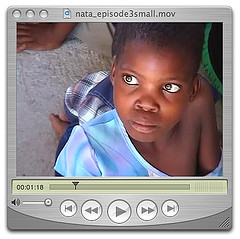
Introduction
In 1948, the United Nations adopted the Universal Declaration of Human Rights that stipulated that “everyone has the right to a standard of living adequate for the health and well-being of oneself and one’s family, including food, clothing, housing, and medical care.” Despite this, the stark reality remains that healthcare, particularly in developing countries, is often an under-invested area of the development framework when weighted against other pressing issues that include poverty, economic instability, hunger, and the lack of a transportation infrastructure.

However, in a world enhanced with new modes of communication, information technology, and an increased ability to bridge the digital divide, healthcare professionals are re-thinking traditional forms of care and employing new methods to enable greater access to healthcare. One medical practice is allowing individuals to receive care in an effective and revolutionary way: remotely.
See also on this site:
Remote Access: Telemedicine
Providing medical care remotely is a practice known as telemedicine. The American College of Physicians describes telemedicine as "the use of audio, video, and other telecommunications and electronic information processing technologies to provide health services or assist healthcare personnel at distant sites." Today, telemedicine also includes solving medical issues via landline or cellular phone.
Dr. Devi Shetty, a proponent of the practice based in India, summarizedthe advantages of telemedicine succinctly: "In terms of disease management, there is a 99% possibility that the person who is unwell does not require an operation. If you don't operate, you don't need to touch the patient. And if you don't touch the patient, you don't need to be there... so technically speaking, 99% of healthcare problems can be managed by the doctors staying at a remote place - linked by telemedicine."
For example, if a child in a metropolitan area of North American complains of a skin rash, he or she will most likely visit his/her primary care physician and be redirected to a dermatologist. However, rather than having to wait to book an in-person appointment with that specialist and travel some length to visit that person face-to-face, telemedicine would allow the patient to connect to the specialist via video-conferencing or other forms of telemedicine. Ironically, the same ideology may be applied to children living in rural villages anywhere in the world. If their local clinician, doctor, or nurse recommends follow-up with a specialist, they may be connected to a physician in any part of the world in a much shorter - and less costly - manner.
As Daniel A. Kurywchak, founder and CEO of Telemedicine.com notes, "Whether you live in the center of Los Angeles or deep in the Brazilian Amazon, Telemedicine is an invaluable tool in Healthcare." Mr. Kurywchak knows this from experience, having trained over 700 health practitioners to use telemedicine, and having implemented telemedicine programs in the U.S., Nigeria, the Amazon, India, China, and Lebanon. His work has placed him in populous, developed urban areas as well as rural villages with no running water, and he has used ingenious "topologies from portable satellite systems to ISDN technologies" [Integrated Services Digital Network, a telecommunications network that has the capacity to relay many forms of media in digital form] to create successful, low-cost programs.
Why Telemedicine?
In an ideal scenario, a patient with a symptom or illness would see a doctor immediately, receive treatment, or be sent immediately to see a specialist - with little time lost and at a very low cost. However, the exponential growth in the world's population (a doubling from 2.5 billion to 5 billion from 1950 to 1990, followed by an annual increase of 1.3%, or 90 million new people every year) means that there are more people who need to see doctors than ever before. Aside from this, there is a worldwide shortage of healthcare workers - the World Health Organization estimates that there are 2.4 million too few healthcare professionals including doctors, midwives, and nurses - and developed countries receive a disproportionate amount of their care.
Additionally, medical advances mean that more people can be treated and more illnesses can be cured, causing an increased demand for state-of-the-art technologies and practices, and patient expectations are high. The global shortage of medical resources and personnel necessitate developing innovative, low-cost solutions to the gap between the "developed" and "developing." Because of this, telemedicine has been adopted and is being used in South Asia, Africa, South America, and East Asia to deal with rural populations with limited or no access to healthcare and few financial resources to combat that problem.
The case for telemedicine may be analyzed most effectively when placed in the geographical and socio-historical context of a developing country, such as India: the Indian Example.
HOME
-- NEJ
Sources
Groups & Resources
American College of Physicians
Telemedicine.com.
Telemedicine Society of India
Telemedindia.com
Arab-African Telemedicine Network
Relevant Articles
"Lagos State to Launch its ICT Network of Technological Possibilities." The Nigerian Bulletin: Business & Community Resource. Sept. 9, 2008.
Madden, Kendall. "O Doctor, Where Art Thou? Telemedicine Allows Doctors to See Patients Thousands of Miles Away."
Image: Flickr/Creative Commons License.


